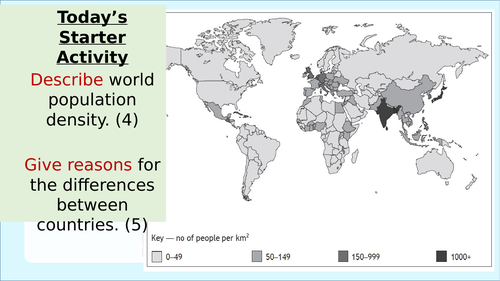


This lesson is designed to meet the requirements of the Scottish curriculum and provides students with a practical and in-depth understanding of this powerful data visualisation tool.
In this lesson, students will delve into the purpose, analysis, design, and evaluation of dot distribution maps. Through the themes of Australian Indigenous groups and Scottish crime, students will explore real-world data and develop essential skills that go beyond theoretical knowledge. The lesson also introduces students to SIMD, what it is and how to use the resources provided by the Scottish Government.
This download includes a PowerPoint for teaching and a PDF for pupils. This provides both the notes and tasks for learning purposes.
Key features of the lesson include:
-
Purpose: Students will understand the fundamental purpose of dot distribution maps. They will learn how these maps represent the spatial distribution of data points, emphasizing density, concentration, or dispersion. Students will grasp the significance of dot distribution maps in revealing patterns and relationships.
-
Analysis: Practical examples will guide students in analysing dot distribution maps effectively. They will learn how to interpret the patterns and clusters of dots, identify trends, and draw meaningful conclusions about the spatial distribution of Australia’s Indigenous groups and Scottish crime. This skill will enable them to extract valuable insights from dot distribution maps.
-
Design: Students will explore the various design considerations for creating impactful dot distribution maps. They will understand how to select appropriate dot placement, determine their color if necessary, and consider the use of legends or scales. Students will critically evaluate design choices to enhance the clarity and communicative power of their maps.
-
Evaluation: The lesson fosters critical thinking skills by teaching students to evaluate dot distribution maps rigorously. They will assess the accuracy and reliability of the data sources, consider potential biases or limitations, and evaluate the map’s effectiveness in communicating information. Students will develop a discerning eye for evaluating and improving dot distribution maps.
-
Practical Examples and Tasks: The lesson revolves around the captivating themes of Scottish crime and SIMD. Students will work with real data sets, analyzing and mapping crime incidents or deprivation levels across Scottish regions. Engaging tasks will challenge them to create their own dot distribution maps, interpret spatial patterns, and present their findings to their peers.
By the end of the lesson, students will have a deeper understanding of spatial patterns related to Scottish crime and deprivation. They will possess valuable skills in data visualisation, analysis, and interpretation that can be applied across various geographical contexts.
Something went wrong, please try again later.
This resource hasn't been reviewed yet
To ensure quality for our reviews, only customers who have purchased this resource can review it
Report this resourceto let us know if it violates our terms and conditions.
Our customer service team will review your report and will be in touch.